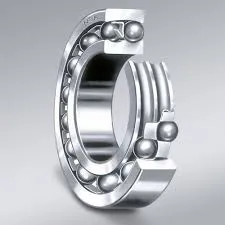
Dec . 15, 2024 17:00 Back to list
taper roller bearing clearance chart
Understanding Taper Roller Bearing Clearance A Comprehensive Guide
Taper roller bearings are widely used in various applications ranging from automotive to heavy machinery, primarily due to their ability to support axial and radial loads simultaneously. One crucial aspect of the performance and longevity of taper roller bearings is the clearance between the rolling elements and the raceway. Proper clearance is essential to ensure optimal operation and longevity of the bearing. This article delves into the significance of taper roller bearing clearance and the factors that influence it.
What is Bearing Clearance?
Bearing clearance refers to the space between the rolling elements (the rollers) and the inner and outer raceways of the bearing. The right amount of clearance can prevent excessive wear and overheating, ensuring that the bearing operates smoothly. Conversely, too little clearance can lead to high temperatures and premature failure, while too much clearance can result in increased vibration and reduced load-carrying capacity.
Importance of Clearance in Taper Roller Bearings
1. Load Distribution Adequate clearance ensures that the load is evenly distributed across the bearing surfaces. This distribution is crucial in taper roller bearings since they are designed to carry combined loads.
2. Thermal Expansion Bearings operate under various temperature conditions. As temperatures rise, materials expand. Sufficient clearance allows for thermal expansion, reducing the risk of contact between components that could lead to failure.
3. Lubrication Proper clearance facilitates effective lubrication within the bearing, enabling the lubricant to reach all necessary areas and form a protective film that minimizes friction.
4. Noise and Vibration Incorrect clearance levels can increase noise and vibration during operation. Maintaining the right clearance minimizes these factors, leading to a quieter and more efficient operation.
taper roller bearing clearance chart

Taper Roller Bearing Clearance Chart
To assist engineers and technicians in determining the appropriate clearance, a taper roller bearing clearance chart is often used. The chart provides a range of recommended clearance values based on various factors, including the size of the bearing and its application. It is essential to consider the specific operating conditions such as load type, speed, and temperature when using this chart.
Factors Influencing Bearing Clearance
1. Load Conditions The load applied to the bearing can significantly affect the clearance required. Higher loads typically necessitate tighter clearances to improve load-carrying capacity.
2. Operating Environment Factors such as temperature fluctuations, contamination, and humidity can impact clearance. In harsh environments, it is crucial to account for these conditions when determining the ideal clearance.
3. Bearing Size and Type Different sizes and types of taper roller bearings have specific clearance needs. For instance, larger bearings may require different clearance settings compared to smaller ones due to their load distribution characteristics.
4. Installation and Assembly The method of installing the bearings can also influence clearance. Proper alignment and fitting during assembly are vital to achieving the desired clearance.
Conclusion
In summary, taper roller bearing clearance is a critical parameter that directly affects the performance and lifespan of the bearing. Understanding and applying the right clearance based on the taper roller bearing clearance chart is necessary for achieving optimal results. Engineers and technicians must consider the various factors that influence bearing clearance to ensure reliable operation in their specific applications. By doing so, they can reduce the risk of failure and enhance the overall performance of the machinery relying on taper roller bearings.
Latest news
-
Premium Deep Groove Ball Bearings | High Speed & Reliability
NewsAug.29,2025
-
Durable Scaffolding Clamps - Secure & Reliable Tube Connectors
NewsAug.28,2025
-
Common Failures in Thrust Ball Bearings and Solutions
NewsAug.22,2025
-
How Tapered Roller Bearings Can Take Shock Loads
NewsAug.22,2025
-
Angular Bearings in High-Precision Spindles
NewsAug.22,2025
-
The Impact of Misalignment on Cylindrical Roller Bearing Performance
NewsAug.22,2025
